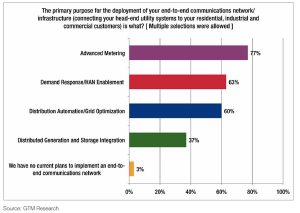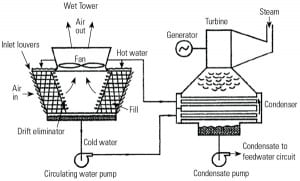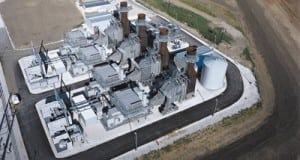-
Commentary
The Second Wave of the Smart Grid
Now that U.S. utilities have taken federal stimulus funds and seamlessly built out two-way advanced metering infrastructure (AMI) connecting utility control centers and end users (ok, not completely, but let’s assume that the “stall-ulus” becomes a true stimulus), the question becomes, what’s next? At the moment, this new “comm layer” or “platform” has utilities planning in two directions: upstream and downstream from the smart meters.
-
Commentary
"Cap and Innovate" for Electric Utilities
The Kerry-Graham-Lieberman bill is a very important step forward in the climate debate. We need federal action on climate legislation now. And we need to get it right.
-
News
Scientific Calculator
Carol Browner, director of the White House Office of Energy and Climate Change Policy, trusts the latest Intergovernmental Panel on Climate Change (IPCC) report’s conclusions that anthropogenic carbon emissions are the primary cause of climate change. When pressed, the customary response of Browner and other proponents has been to rely on that oft-cited list of 2,500 scientists said to have given their full support of the report’s conclusions. Browner should check her facts.
-
Water
Appraising Our Future Cooling Water Options
Ensuring the availability of water for power plants is a matter of both water quantity and quality. As freshwater becomes less available for power plant use, new supplies from marginal or impaired sources will require new cooling technologies. We look at cooling equipment options and how water availability and quality affect cooling system design and cost.
-
Commentary
New Breed of Hacker Targeting the Smart Grid
In recent months, U.S. utilities, manufacturers, and technology firms received $3.4 billion as part of the economic stimulus package. These funds have been allocated to help modernize the country’s electric power system and increase energy efficiency. However, as these "smart-grid" grants continue to be awarded, questions are being raised about how to safeguard smart meters and other critical infrastructure from cyber attacks.
-
Coal
CORRECTED: New York Coal Plant to Get 20-MW Energy Storage System
New York regulators in April approved construction of a 20-MW energy storage system at the site of an operating coal-fired power station near Union, Broome County. When operational, the $22.3 million project, owned by AES ES Westover LLC—an AES Corp. subsidiary—will use the technology to participate in New York’s growing day-ahead market for ancillary services and regulation.
-
O&M
Improving SCR Performance on Simple-Cycle Combustion Turbines
Austin Energy replaced the selective catalytic reduction (SCR) catalyst twice over five years for its four peaker turbines. The duct modifications and injection grid redesign, combined with new catalyst, are producing high NOx reduction and low ammonia slip, and the catalyst is now expected to last at least five years.
-
Coal
EPA Proposes Two Options to Regulate Coal Ash
In an unusual two-option proposal that drew clashing views from green groups and power plant operators, the Environmental Protection Agency has proposed regulating coal combustion ash either as a nonhazardous waste subject to tougher management and disposal requirements or as a "special" hazardous waste that would have similar controls but still be eligible for recycling and reuse in products such as Portland cement.
-
Wind
Offshore Wind Takes Off Around the World
After more than a decade of debate, in April, U.S. Interior Secretary Ken Salazar approved Cape Wind, a proposed 130-turbine offshore wind farm for Nantucket Sound in Massachusetts. It would be the first wind facility in U.S. waters. Despite remaining hurdles, the approval marks a shift in political winds for the nation’s fledgling industry, and it could spur further development of projects proposed for relatively shallow waters along the East Coast and in the Great Lakes.
-
O&M
Real-Time Monitoring of Natural Gas Fuel Cleanliness
Gas turbines require clean gas to operate efficiently. Particulate contamination fouls fuel nozzles, causes increases in flue stack emissions, and occasionally causes unplanned plant outages. Now a new real-time natural gas cleanliness monitoring and web-based alarm system is providing valuable protection for natural gas–fired power plants. The adaptation of laser light–scattering technology for the purpose of contaminant measurement in high-pressure gaseous pipelines provides a method of monitoring liquid and solid contamination levels.
Search






